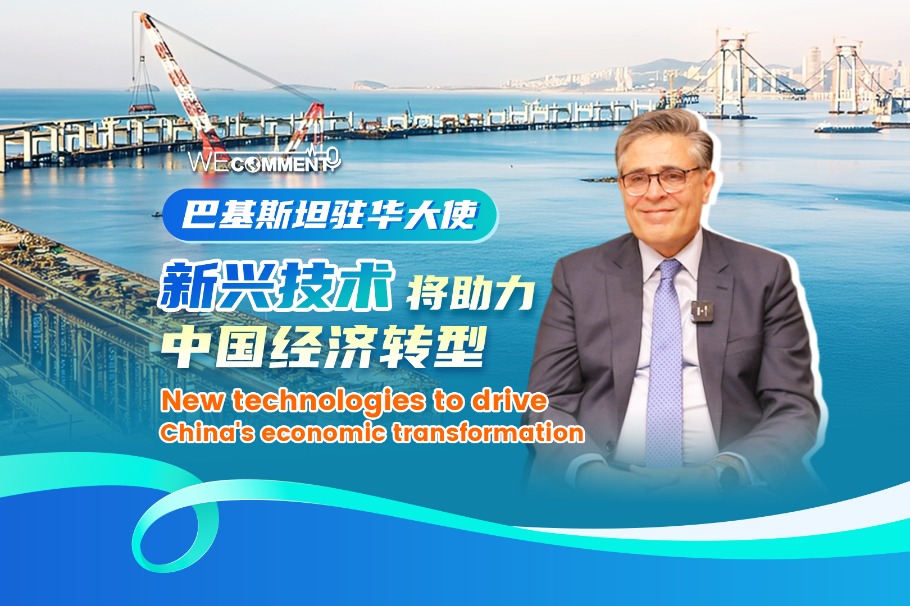Eco-friendly principles applied to every sector

As one of the pilot cities for low-carbon development in China, Chengdu is accelerating the green transformation of its socioeconomic development in production, livelihood, ecology, industry, transportation and energy.
Sinotruk Chengdu Wangpai Commercial Vehicle in Qingbaijiang district is an example of the city promoting the automation of vehicles. It is the biggest new energy commercial vehicle manufacturing base for China National Heavy Duty Truck Group, or Sinotruk, in Southwest China.
According to the company, a new energy heavy-duty truck can be manufactured in its factory every eight and a half minutes with the support of an artificial intelligence system.
The commercial vehicle industry in Qingbaijiang has been developed into an industrial cluster centering on Chengdu Wangpai and more than 10 local supporting auto parts manufacturers, according to an official of the district.
Aiming to expand the network of low-carbon transportation, Qingbaijiang introduced a project of State Power Investment Corp, or SPIC, with an investment of 5 billion yuan ($762 million) last year.
Focusing on new energy heavy-duty trucks, the project will build nearly 300 intelligent battery charging and swapping stations and a financial settlement center in Sichuan province. It will also build a local industrial park for manufacturing modules and core components to meet the stations' needs.
In recent years, Chengdu has developed NEVs as one of the five high-level emerging industries in the city. To date, the city is home to 100 NEV businesses, with an annual production capacity topping 300,000 vehicles, according to local officials.
Apart from the NEV industry, Chengdu is seeing an increased development in photovoltaic, hydrogen energy, energy-saving and low-carbon buildings and other fields.
The green and low-carbon industry has become a force to foster new economic growth in the city, local officials said.
The Chengdu bureau of economic and information technology estimates the current industrial value of the photovoltaic field at nearly 20 billion yuan. The industry has integrated more than 20 key businesses in a bid to construct a photovoltaic industrial cluster worth 100 billion yuan.
In terms of the hydrogen energy industry, Chengdu has expanded the construction of infrastructure. From fuel cells to vehicle manufacturing, it includes an industrial hydrogen chain combining gas processing, storage, transportation, refueling and application. The industry has integrated more than 60 businesses and scientific research institutions, with the annual hydrogen energy revenue topping 10 billion yuan.
Dedicated to establishing a supply and consumption structure centering on clean energy, the city has innovated application scenarios featuring low-carbon development in sectors including energy, building, transportation and lifestyle.
At the Chengdu Tianfu Agricultural Expo Park, a 1.4-hectare fishpond is built as an ecological breeding project using photovoltaic technology.
With photovoltaic panels installed at the top, the fishpond below is equipped with a digitally controlled breeding ground, which helps to breed fish all year round. The photovoltaic modules generate 500,000 kilowatt-hours of electricity per year.
The project is expected to be put into trial operation at the end of June. It will not only help to generate electricity for daily use, but also support other sites' electricity needs in the park such as a restaurant and working stations, according to Yan Xiaoyu, a manager of the project.
In addition, the project has developed supporting facilities including a base for popular science education of rural vitalization and carbon neutrality, Yan said.
As a consumer favorite of Chengdu, hotpot businesses have conducted their own green transformation in response to the city's low-carbon development.
Cai Jing, an owner of a hotpot restaurant in Chengdu, replaced gas cookers with electric ones early this year. Compared with gas, electricity is cleaner and safer at a low cost, Cai said.
According to official data, Chengdu is home to more than 10,000 hotpot restaurants using electric cookers. This move is expected to help to reduce more than 710,000 metric tons of carbon emissions annually.
To support the goals of peak carbon by 2030 and carbon neutrality by 2060, Chengdu has ramped up efforts in developing green technologies.
By the end of 2021, the Tianfu Yongxing Laboratory was launched to research zero-carbon energy, resources of carbon neutralization, geothermal energy and carbon sinks, aiming to become an innovation hub of carbon neutralization technology and to lead industrial development in the country.
In March, Chengdu authorities issued a guideline to conducting zero-carbon pilot work in the city. It will innovate institutions, technologies and the management of green and low-carbon development.
By 2025, Chengdu is expected to construct at least 30 industrial parks, businesses, communities and scenic spots using zero-carbon principles and build more than 30 zero-carbon communities across the whole city, according to the guideline.







